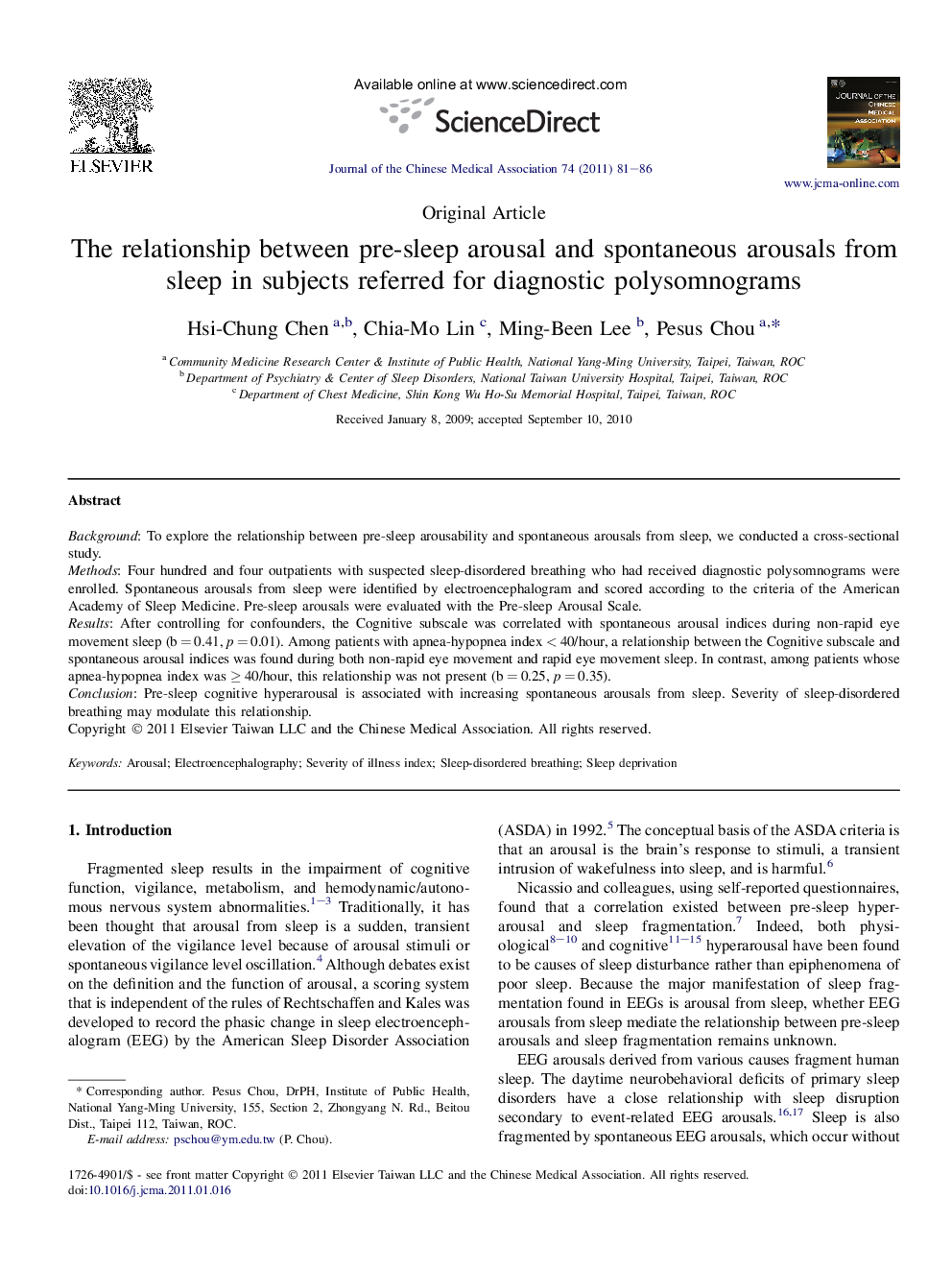| Article ID | Journal | Published Year | Pages | File Type |
|---|---|---|---|---|
| 3476795 | Journal of the Chinese Medical Association | 2011 | 6 Pages |
BackgroundTo explore the relationship between pre-sleep arousability and spontaneous arousals from sleep, we conducted a cross-sectional study.MethodsFour hundred and four outpatients with suspected sleep-disordered breathing who had received diagnostic polysomnograms were enrolled. Spontaneous arousals from sleep were identified by electroencephalogram and scored according to the criteria of the American Academy of Sleep Medicine. Pre-sleep arousals were evaluated with the Pre-sleep Arousal Scale.ResultsAfter controlling for confounders, the Cognitive subscale was correlated with spontaneous arousal indices during non-rapid eye movement sleep (b = 0.41, p = 0.01). Among patients with apnea-hypopnea index < 40/hour, a relationship between the Cognitive subscale and spontaneous arousal indices was found during both non-rapid eye movement and rapid eye movement sleep. In contrast, among patients whose apnea-hypopnea index was ≥ 40/hour, this relationship was not present (b = 0.25, p = 0.35).ConclusionPre-sleep cognitive hyperarousal is associated with increasing spontaneous arousals from sleep. Severity of sleep-disordered breathing may modulate this relationship.
